
THE SCIENTIFIC METHOD
TRAVELING WITH YOU!
LIGHT IS LIFE!
LIGHT AND SHADOWS
SHADOWS ON THE WALL SHADOW PUPPETS LUMOS!
LIGHT IN MATERIALS
TESTING MATERIALS
REFLECTIONS OF LIGHT GUIDE THE LIGHT MIRROR, MIRROR


THE SCIENTIFIC METHOD
TRAVELING WITH YOU!
LIGHT IS LIFE!
LIGHT AND SHADOWS
SHADOWS ON THE WALL SHADOW PUPPETS LUMOS!
LIGHT IN MATERIALS
TESTING MATERIALS
REFLECTIONS OF LIGHT GUIDE THE LIGHT MIRROR, MIRROR
The SCIENTIFIC METHOD is the way in which SCIENCE investigates the REALITY around us. It is the most reliable method we know to progress in the KNOWLEDGE of things and the world.
Scientific does not mean “accurate”, but reproducible, that is, that it can be repeated. With the same initial conditions, we expect the experiment to always have the same result. The scientific method is EXPERIMENTAL, that is, based on experiments, tests and observations, and this is the fun part in which the scientist becomes creative!
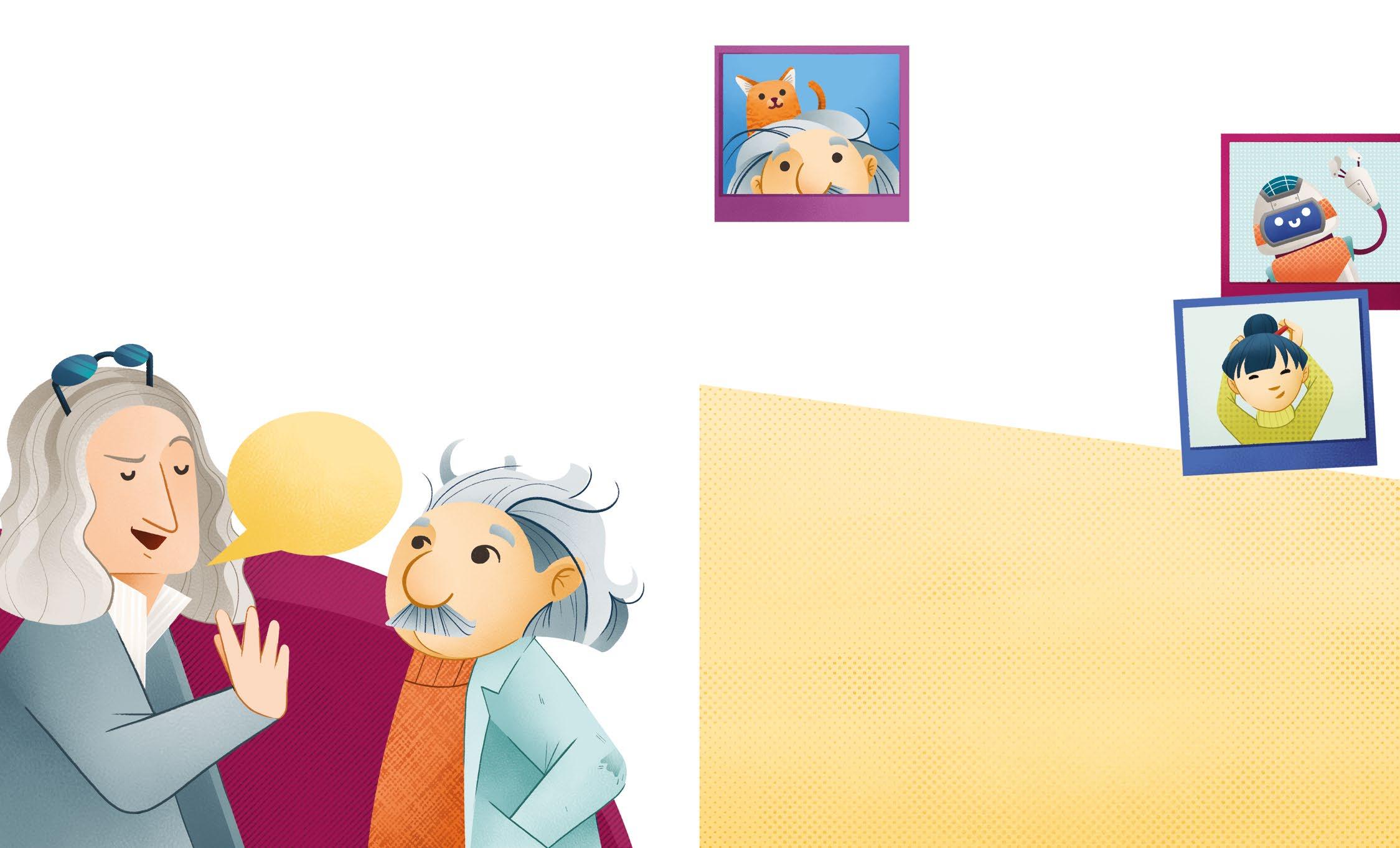
1. Observing a phenomenon and asking yourself questions.
2. Formulating a hypothesis, that is, a possible explanation of the phenomenon.
3. Carrying out an experiment, to check if the hypothesis is correct.
4. Analyzing the results.
5. Repeating the experiment in different ways.
6. Coming to a conclusion and establishing a rule.
“What we know is a drop, what we don't know is an ocean!”
You can call me PROF. ALBERT.
I’m a renowned scientist, and a lover of outdoor trips and cycling. I'm passionate about life, the universe, and... everything!
I’m GREG the ROBOT, an advanced form of artificial intelligence. I have a positronic brain with too many mistakes in it...
My name is MONICA, I love traveling and reading books. I am really passionate about cooking.
1. Before doing any experiment, always read all the instructions carefully and make sure you have all the materials you need to do it.
2. It is forbidden to eat or drink during the experiments and, above all, to eat or drink your experiment! It's a bad idea! Don’t do it.
3. Use old clothes, because you will get dirty!
4. Wash your hands after every experiment. Some substances you use may be harmful to your health.

5. Always ask an adult before using sharp utensils, stoves, or domestic appliances.
6. Always clean your utensils after you’ve finished an experiment or project, and make sure you put them away tidily.
7. Throw away any rubbish or substances in the correct trash can.
Some of the scientific activities in the book require adult supervision. For some of the experiments it is important to try several them times in order to master them. Supervising adults should allow kids to experiment, make mistakes, and try again.
All the words in CAPITAL LETTERS are in the Glossary on pages 46-47, where the terms are explained in more detail.


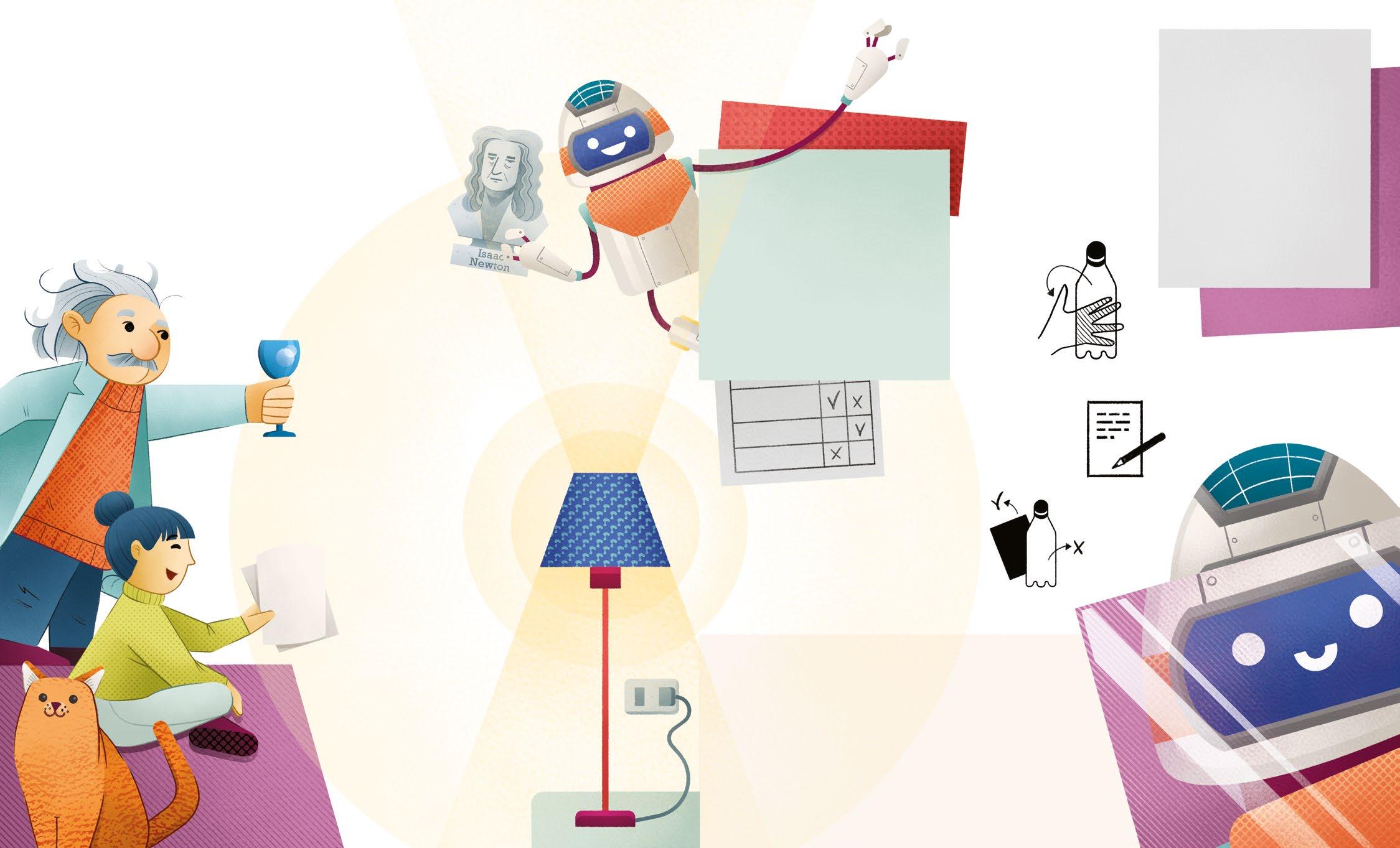
you will need:
• aplasticbottle
• aglass
• a cushion
• a book
• parchmentpaper
• aportablemirror
• paper
• pencil
3
2
1
Put your hand inside each object
Make a note of whether or not you can see your hand
Classify the objects as opaque, transparent, or translucent
Try with other materials you find around the house, then make notes of your findings
Ifyoucanseeyourhandclearly,thematerial isTRANSPARENT.Ifyourhandisblurredandnotveryclear, thematerialisTRANSLUCENT.Ifyoucan’tseeyourhand at all, the material is OPAQUE.








Time: do it with: 5-10 minutes

When a ray of light encounters an obstacle, two things can happen:
1. If the surface is extremely smooth, like the surface of a lake or a mirror, the rays of light are reflected in an orderly manner and the image is clear. This phenomenon is called REFLECTION.
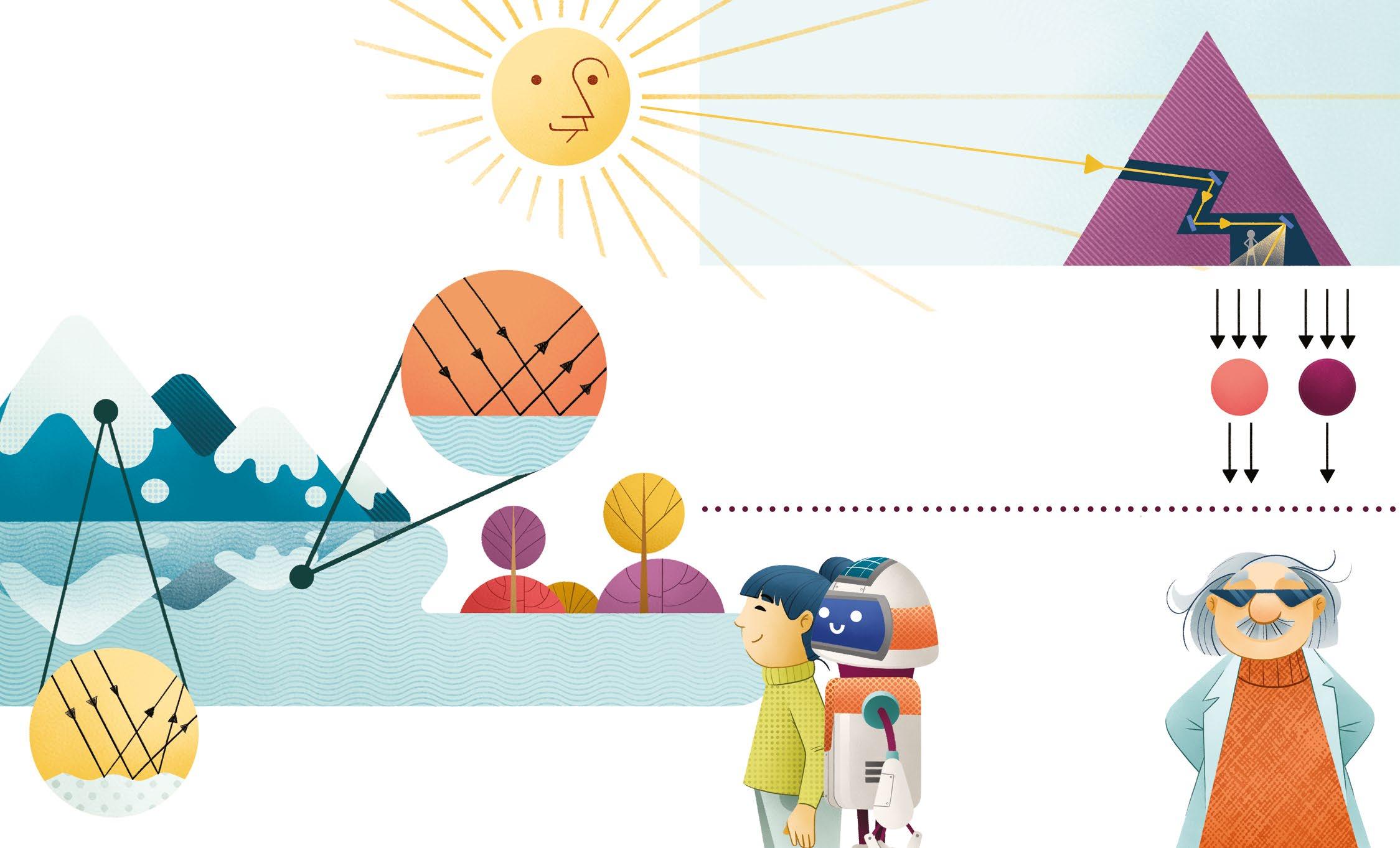
2. If the surface is rough like cardboard, a wall, or a snowy surface, the reflected rays of light scatter in all directions, and this is called DIFFUSE REFLECTION.
Did you know...
The ancient Egyptians discovered that some surfaces were able to reflect a beam of light and make it “bounce.” With an ingenious system of well-polished slabs, used like mirrors, they were able to reflect the sun’s rays and illuminate the inside of the pyramids.

Not all of the light that hits an OPAQUE object is reflected or scattered. Part of it is absorbed. If the object is light-colored it only absorbs a small part, whereas a dark object absorbs almost all of it.
PROTECTED from THE SUN
When we are out in the snow, or at the beach, dark sunglass lenses protect our eyes from the glare caused by the light-colored irregular surfaces, which cause light to scatter in all directions.
3
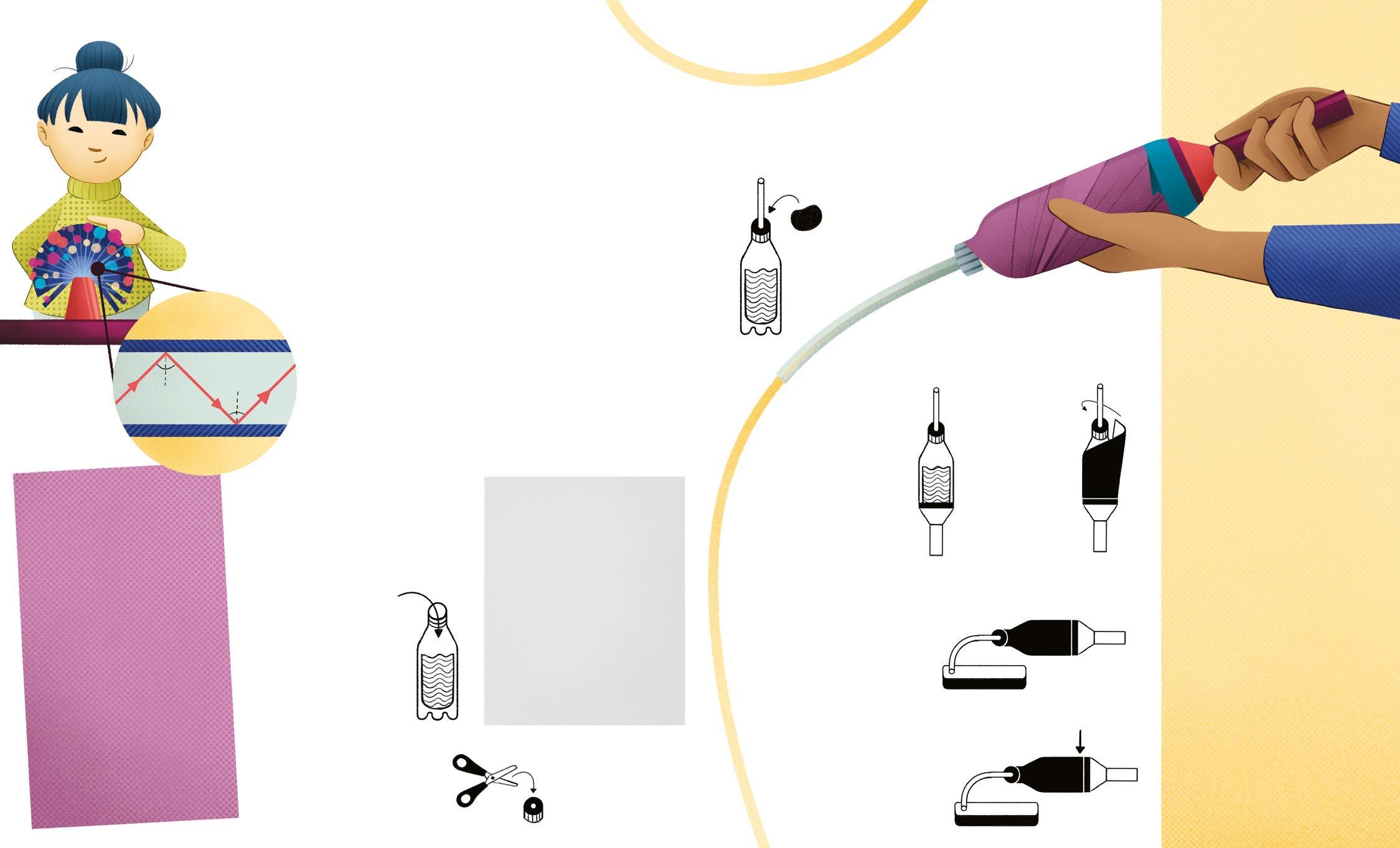
Put the lid on the bottle, insert the tube into the hole, and seal it with the modeling dough
4
Attach the torch to the bottom of the bottle with scotch tape, and then turn it on
6
Put the free end of the tube into the bowl
5
Wrap the bottle in a dark cloth
Turn off the light, position the bottle as shown in the illustration, then pierce tthe bottom of the bottle with the drawing pin. The water will start to come out of the tube
7
The jet of water that comes out of the tube isglowing!Thelight doesn’t curve, it is reflected in a sort ofzigzagdownthetube until it exits.
Isaac Newton discovered that, when a ray of white light passes through a glass prism, it will split into several colors. This phenomenon is called chromatic dispersion.
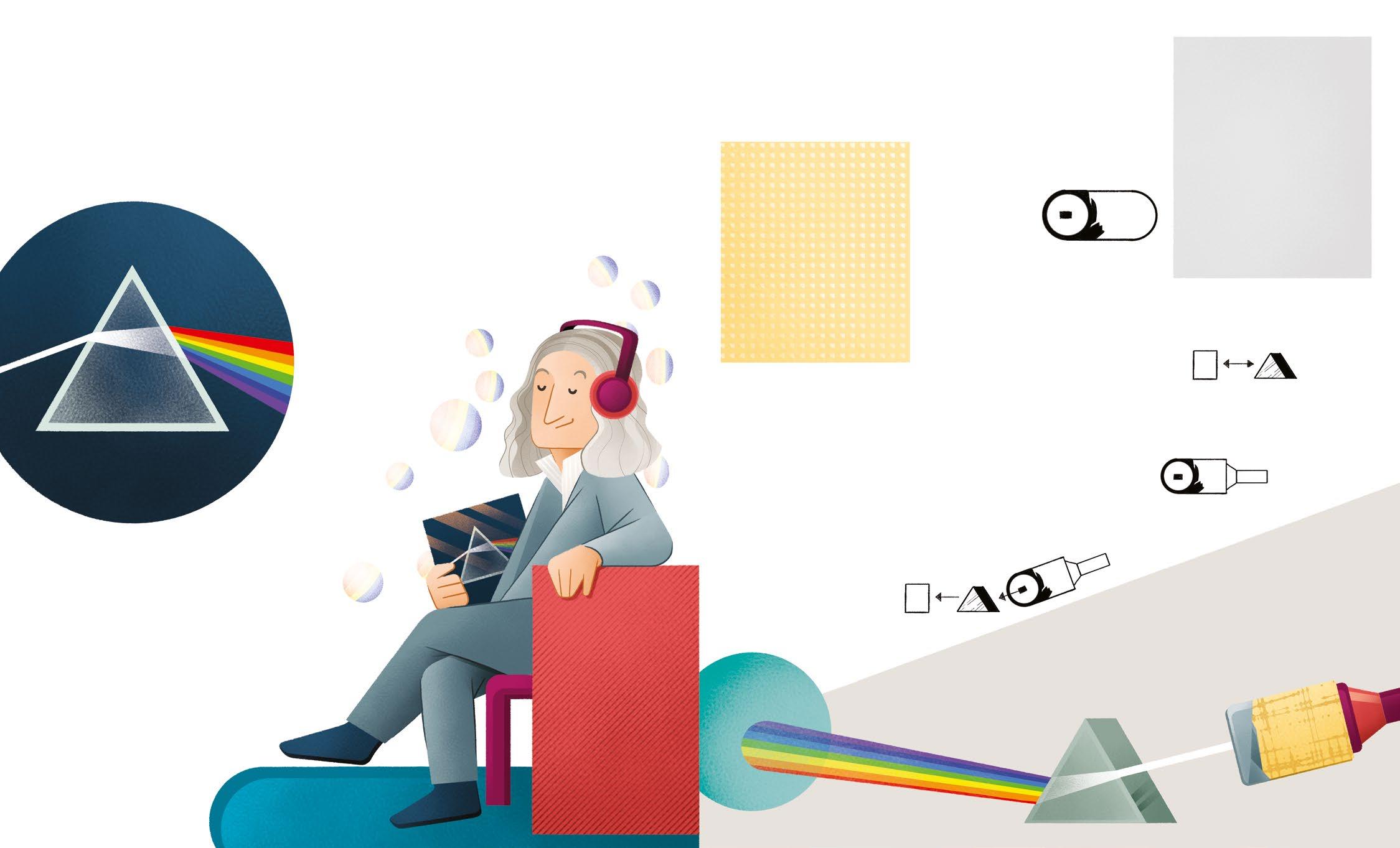
Light is therefore a set of colors that range from red to purple. This is the visible light spectrum.
When sunlight encounters a drop of water, a RAINBOW is born. The drop of water acts as a prism; it refracts the rays of light, causing their colors to disperse in a gigantic spectrum.
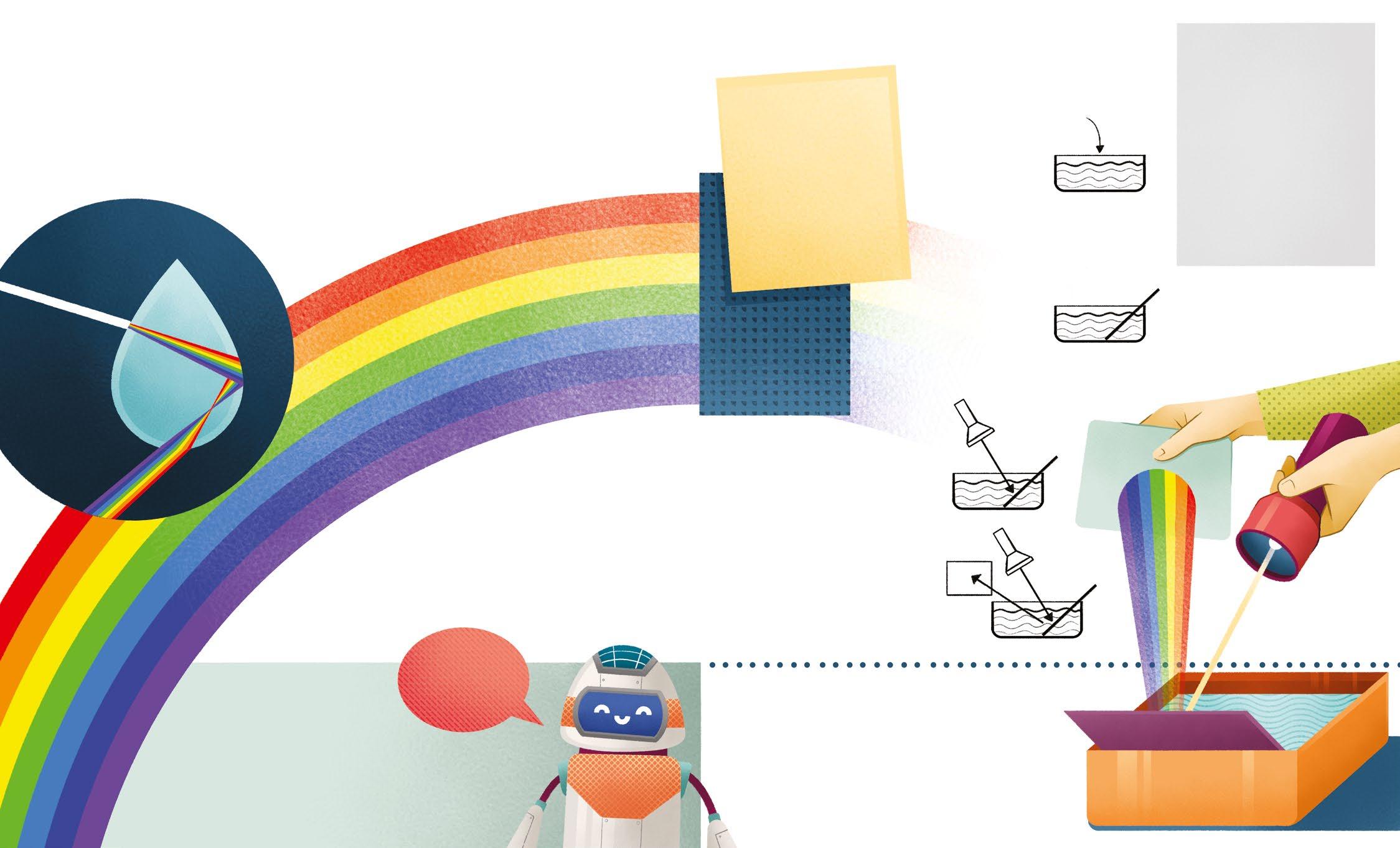
The colors of the rainbow appear in order, from the least refracted to the most refracted: red, orange, yellow green, blue, indigo, and violet.
Lots of songs have been written about rainbows. One of the most famous is Somewhere over the Rainbow, written in 1939 for one of the scenes in the film The Wizard of Oz.

you will need:
• a torch
• a shallow dish
• water
• white card
• a mirror Fill the dish with water
1 Put the mirror in the water
2 Shine the torch on the mirror
4
3 Intercept the reflected light with the white card and see what happens
A rainbow forms on the card. This is because thewhitelightreflectedinthemirrorisrefractedas itpassesthroughthewater,andthecolorsthatitis composedofaredeviatedatdifferentangles, becomingvisibleonthecard.









DIRTINESS: Time: 30 minutes do it with:


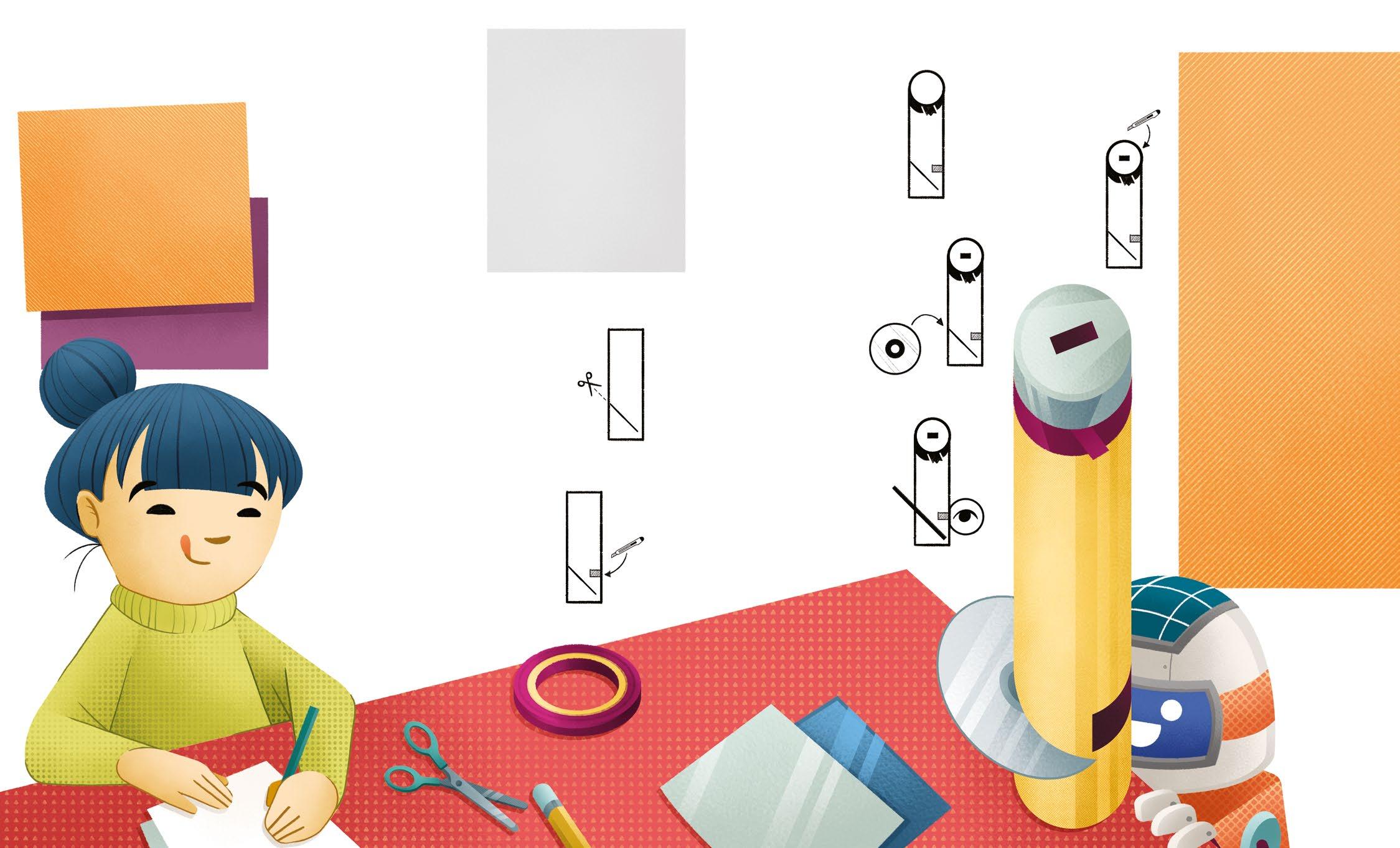
you will need:
• a carboard tube
• a CD
• scotch tape
• aluminum foil
• a utility knife
• scissors
• pencil
Let's make an instrument that allows you to see the separate component colors of light through a new phenomenon called diffraction: a spectroscope.










Time: 15 minutes do it with:

1
2
Make a 45 ° cut about one third of the way along the tube, as shown in the illustration
Using a utility knife, cut out a small square window opposite the cut
3

Cover the top of the tube with aluminum foil
5
Insert the CD into the 45 ° cut
6
Point the slot in the spectroscope towards the sky (not directly towards the sun), and look through the window
4
Using a utility knife, make a small slit in the middle of the aluminum foil
Whenyoulook throughthewindow, youwillseeasmall rainbowforming on the CD! CDs have circulargroovesthat are used to record data,andtheyare soclosetogether thattheyactas adiffractiongrating that breaks down thelight.
5
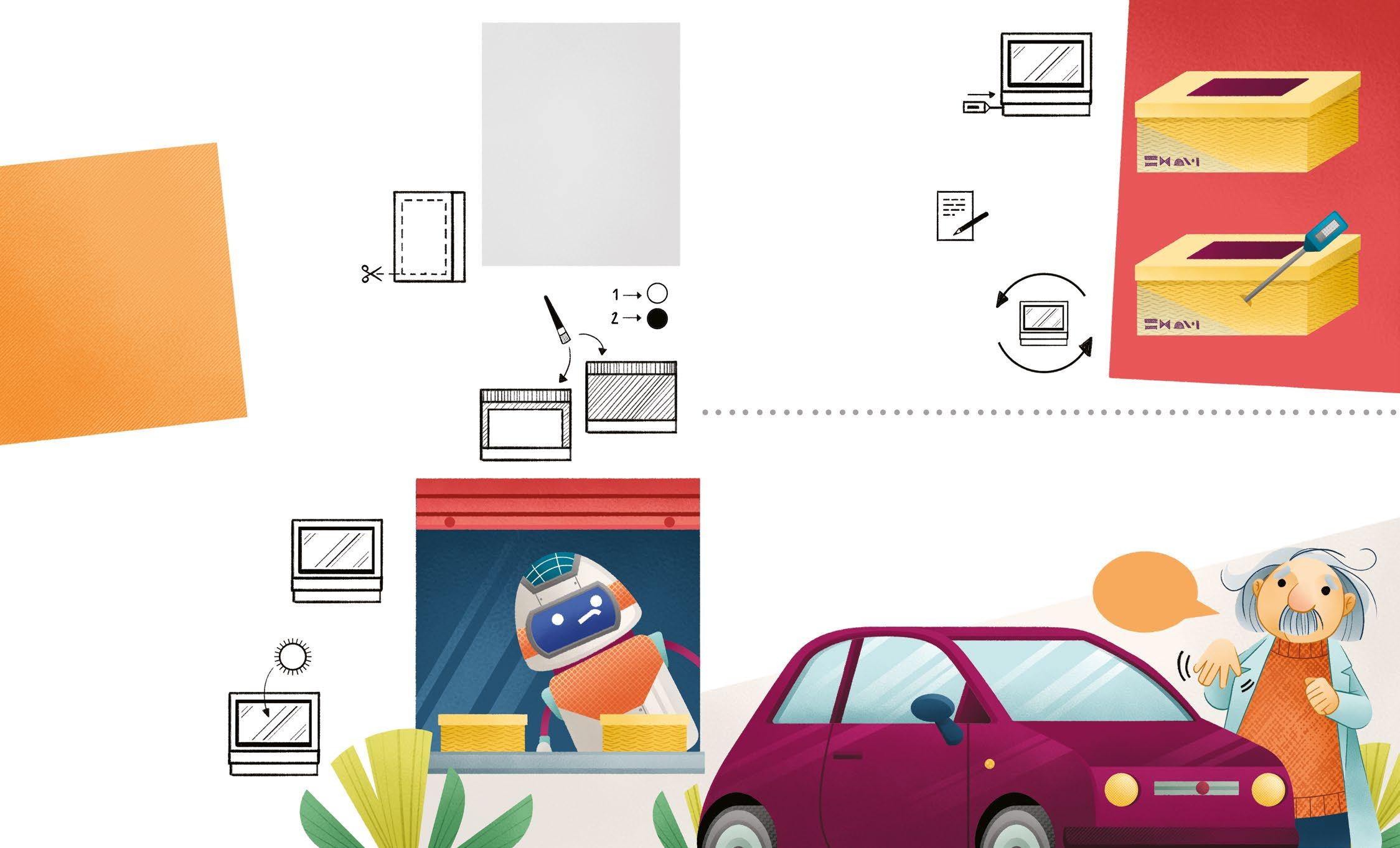
6
With the pointed end of the thermometer, make a hole in one side of the box, then insert the bulb of the thermometer
7
Make a note of the temperature every 30 seconds (10 times)
Repeat points 4, 5 and 6 with the black box. Write down the different temperatures
Althoughatfirstthetemperaturereadingsforthetwoboxesaresimilar,overtime thetemperaturesoftheblackboxwillbehigherthanthoseofthewhiteone. Thisisbecauseblackabsorbslightandconvertsitintoheat,whereaswhite reflectsit.That'swhyinsummerwetendtoavoidblackclothes andpreferwearingwhite!
To see beyond the visible spectrum, we humans need special tools.
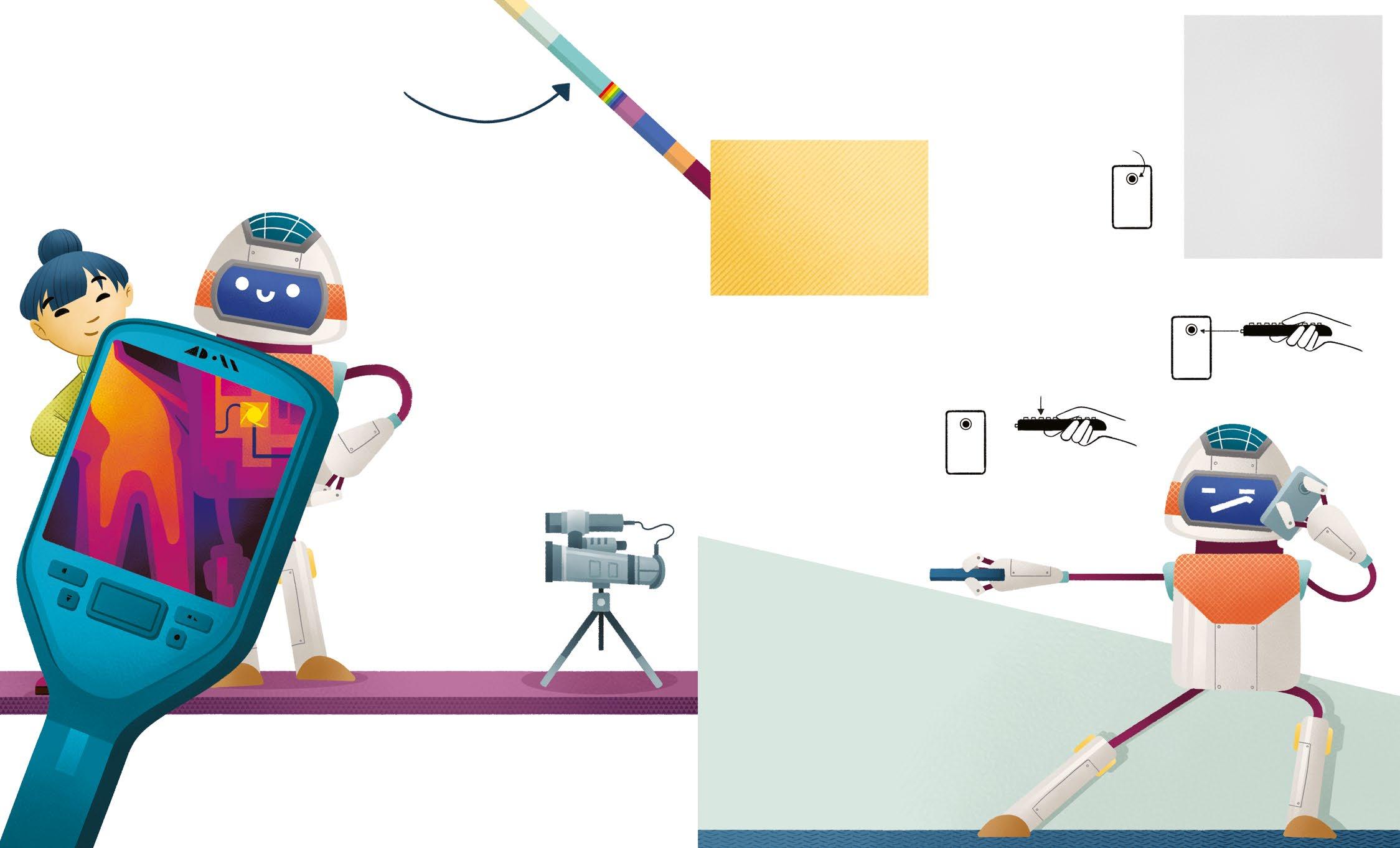
Some special cameras, called thermal imaging cameras, can detect infrared energy, and they are used in devices for seeing in the dark. They are also used by firefighters to find their way in smoke-filled environments.
Astronomers use special telescopes that can view the sky in infrared and ultraviolet light.
Infrared light is used in remote controls to send signals to the TV or automatic gates.

you will need:
• acellphone
• a remote control with anuncoveredLEDlight
3
1
2
Go into a semi-dark or dark room, and turn on your cell phone camera
Point the remote control LED light at the camera
Press a button on the remote control and watch what happens
Somedigitalcamerashavefilterstoblockinfrared light,butmostofthemcandetectit.Whenyoupress a button on the remote control, the camera shows theLEDlightlightingup,anditappears onthescreenasvisiblelight.








DIRTINESS: Time: do it with:


20 minutes
